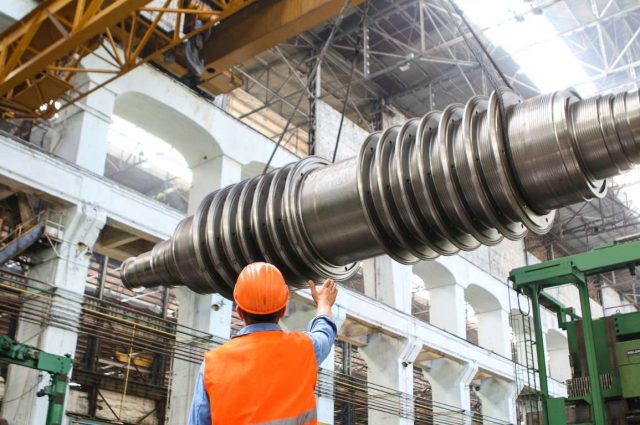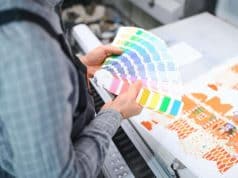Additive manufacturing, the best 3d model scanners, opens up a whole new world of business possibilities. Many manufacturers are turning to this laser processing technique for benefits. Hence, the global additive manufacturing market is expected to surpass $34,846.25 million by 2028.
This technology can potentially transform your supply chain and product development process. In this article, we’ll discuss how additive manufacturing can streamline your production processes, reduce time-to-market and production costs, and enhance supply chain and logistics capabilities. We’ll also cover potential challenges associated with implementing this technology and tips on overcoming them.
Understanding Additive Manufacturing
Additive manufacturing, or 3D printing, is a process that uses laser processing solutions to create an object based on a digital design file. Technology has existed since the 1980s but has only recently become more accessible and practical for businesses.
As the name gives out, it adds layers of parts of products to create the final piece. To create a product, they use laser systems like SLA laser, SLM laser, SLS laser, etc. According to Novanta Photonics, these laser systems are crucial to additive manufacturing.
The company states that with these systems, additive manufacturing can build unique parts that offer design opportunities that are not possible through conventional manufacturing.
This means that the efficiency of laser processing used for additive manufacturing can impact the final product. If precise lasers with enough heat are used, the shapes will be perfect. Otherwise, it will lead to waste, as molding and precision cutting won’t be possible with poor laser processing.
Transforming Business Operations With Additive Manufacturing
Additive manufacturing is transforming the way we design and produce products. It enables companies to be more flexible, responsive, and competitive by reducing costs and time-to-market while improving supply chain efficiency. Model-based estimates have shown that adopting additive manufacturing can reduce 5% of lifecycle costs, including energy consumption and carbon dioxide emissions.
Additive manufacturing has been used by businesses in various industries for over two decades, but only recently has it become more cost-effective than traditional subtractive methods such as CNC milling or injection molding. This shift has allowed companies in all industry sectors to access this technology for use on their production lines or as part of their business strategy.
Streamlining the Product Development Process
Additive manufacturing can help you reduce the number of prototypes, saving time and money. Designating a product digitally allows designers to make changes quickly before sending it to be 3D printed. This enhances product design flexibility by allowing multiple versions of the same part or even different parts to be printed.
The result is faster development times thanks to additive manufacturing’s ability to produce functional components with minimal post-processing required and ultimately higher quality final products because they’re designed specifically for their intended application rather than just being an afterthought on an existing part.
Reducing Time-to-Market and Production Costs
Additive manufacturing is a powerful tool that can be used to reduce time-to-market and production costs. Here’s how:
- Reduce the time to market by manufacturing parts in one step rather than multiple processes. This reduces labor hours, material waste, tooling costs, and logistics expenses associated with moving parts between different machines or departments within your facility.
- Reduce production costs by reducing material usage significantly. As a bonus, because additively manufactured components are often lighter than traditional ones, they’re easier on workers’ bodies when handling them during assembly operations.
Enhancing Supply Chain and Logistics
Additive manufacturing can also help to reduce the time and money required for supply chain and logistics. In particular, additive manufacturing can produce parts on demand just in time. This means you won’t need to store large amounts of inventory in your warehouse, reducing your overall cost of goods sold (COGS).
Additionally, using 3D printing technology at every production stage, from R&D through final assembly and testing, you can eliminate waste by producing only the parts needed for each step. Combined with lean manufacturing principles such as Kanban cards or JIT delivery systems like Amazon Prime Now or Uber Eats, this reduces costs even further.
It can also improve the supply chain by reducing dependency on it. 3D printing can help create products on an emergency basis. For instance, 3D printing is getting integrated into military operations. It can produce spare parts for ships, vehicles, aircraft, and other platforms on an emergency basis, thus getting over supply-related issues from elsewhere.
Leveraging Additive Manufacturing for Business Growth
Additive manufacturing is a revolutionary technology that allows you to create prototypes and small batches of parts in various materials, including plastics, metals, and ceramics. It also enables you to create pieces that would be otherwise impossible to manufacture using traditional methods.
You can use additive manufacturing for various purposes, such as:
- Prototyping: Create physical mock-ups of your ideas before committing them to production. This lets you test designs before committing time and money to full-scale production runs. It also allows you the freedom to try out multiple iterations until you find the perfect solution for your product or service needs.
- Gives You Competitive Advantage: Additive manufacturing can offer a competitive advantage by helping build precise and efficient products. According to IBISWorld, California, Texas, and New York are the states with the maximum number of US 3D printing and rapid prototyping services businesses. Not using this technology in such competitive landscapes can leave you behind in the race.
- Small Runs: If your business only needs a few hundred units per year, additive manufacturing offers an affordable way to produce these items efficiently while maintaining quality standards comparable with mass-production methods such as injection molding or die casting.
Overcoming Challenges and Implementing Additive Manufacturing
Additive manufacturing is a new technology with many advantages, but it can also present some challenges. Before implementing additive manufacturing for your business, it’s essential to understand the technology and how to overcome any difficulties.
When done correctly, additive manufacturing can create parts with complex geometries that would otherwise be difficult or impossible through traditional machining methods. This allows companies like yours to take advantage of new opportunities in areas such as design exploration and optimization while reducing costs and lead times associated with traditional manufacturing processes like casting or forging.
Conclusion
Additive manufacturing is a great place to start if you want to get ahead of the curve. By harnessing the potential of 3D printing and other technologies, you can save time and money while improving quality control in your business.

Speaks from heart, always too passionate and driven by emotions. Spins the words with kindness & sharpness, intriguing your ever-inscrutable minds.




